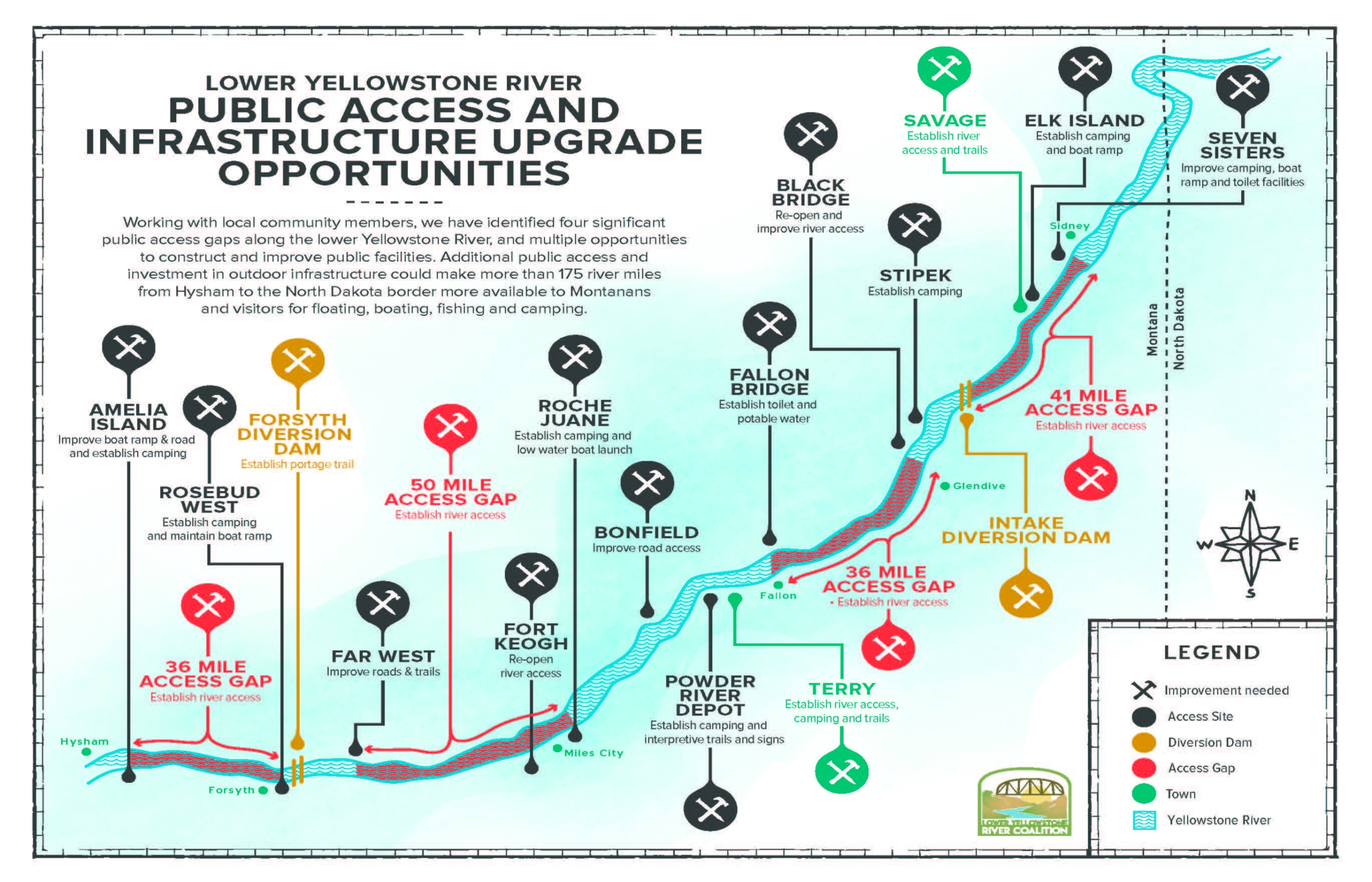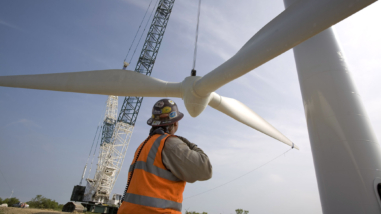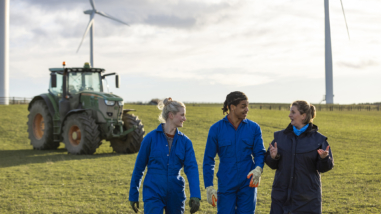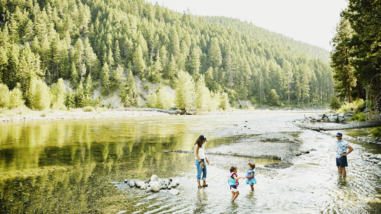Investing in rivers to revitalize communities
The Yampa River runs through Craig, Colorado and a community-led revitalization effort is reconnecting residents to it. Already a destination for floating and elk hunting, the new Yampa River Corridor Project will restore the riverway for the public and wildlife; incorporate a new in-river whitewater park, boat ramps, and river access; and rebuild the system the city uses to get water from the river, in the process, removing a dangerous dam and allowing passage for fish and river rafters. The project to conserve the Yampa is certain to transform how people use and connect to the river, and in the process, each other, in this transitioning coal town.
Even before the project breaks ground, Craig is already a compelling example of a small town coming together to create a more economically and environmentally sustainable future. Designed with input from local businesses, conservationists, ranchers, and community leaders, the project has attracted funding from local, state, and federal government, nonprofit, and foundation sources. With support from Hewlett Foundation grantee Resources Legacy Fund (RLF), Craig successfully secured a $3.3-million grant from the U.S. Economic Development Administration’s Assistance to Coal Communities initiative — enough to cover a majority of project costs. RLF’s Open Rivers Fund also supported engineering and design work for the dam removal and water park.
Craig is not alone in reimagining its future through conservation and economic development. Communities across eastern Montana are also hoping to invigorate their rural economies by investing in their river, the Lower Yellowstone. As the longest free-flowing river in the lower 48 states, the Yellowstone provides crucial habitat for fish and wildlife, recreation opportunities for Montana residents and visitors alike, and essential irrigation water for eastern Montana’s agricultural producers. In 2021, the Montana Legislature, with encouragement from community leaders and support from Governor Greg Gianforte, approved an initial $4-million investment in the 175-mile-long river corridor, and charged a citizen committee to recommend suitable investments.

Drawing of recreation plans for the Lower Yellowstone River in Montana.
That citizen committee — made up of local ranchers, business owners, county commissioners, recreation advocates, chambers of commerce, and conservationists including Hewlett Foundation grantee Wild Montana — invited community input. It has since collectively advocated for improved public access to the river, recreation infrastructure like camp sites and bike trails, and wildlife habitat improvements along the multi-county river corridor.
“The river’s really been the lifeblood of agricultural communities for generations, but it’s got the potential to have an even bigger impact on local economies and quality of life,” said Wild Montana State Policy Director Noah Marion. “If we make intentional and collaborative decisions about how to invest in habitat conservation and infrastructure, we can really benefit people, wildlife, and communities across the board.”
A report issued last year by the Lower Yellowstone River Coalition, Wild Montana, Business for Montana’s Outdoors, and the Montana State Parks Foundation forecasts that an initial slate of improvements could boost visitor spending by $5.3 million, create a total economic output of $6.7 million, and support 56 jobs every year.
“Data and economic research show us that places that care for their public lands and waters and invest in their recreation infrastructure have the chance to achieve greater prosperity than those that do not,” wrote Lance Kalfell in a Montana newspaper op-ed. Kalfell, owner of Kalfell Ranch, is chairman of Prairie County Economic Development Council and a member of the Eastern Plains Economic Development Corporation; he served on the citizen committee.
“Imagine that,” he added, “an idea that sprouted from conversations between regular people and gained enough momentum and support to result in a multi-million-dollar investment from our state government. It’s not quite a Cinderella story but it’s an example of how these kinds of things are supposed to work.”
Or put another way, as advocate Ruby Gonzalez says in a new Cartas de Amor: Love Letters to Our Rivers video produced by grantees American Rivers and Hispanic Access Foundation, “In protecting access to clean water, and clean water itself, we’re also protecting all the ripples that come with it.”




